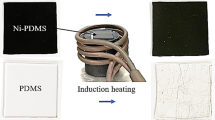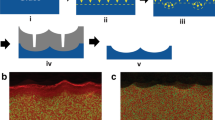Abstract
Patterned glass features textures that generate a non-flat surface and, to some extent, blur its transparency. Patterned glass is roll-casted, and it is when it gets squeezed in the casting rolls that the pattern gets imprinted. There exist a wide variety of commercially available patterns which vary in geometry and depth of imprint. As the patterns involve a surface modification, it is expected that the strength would differ from annealed flat glass. Design standards acknowledge this by proposing a surface profile factor when calculating the design strength from the characteristic value. However, all different patterns are qualified by the same surface factor. There is not enough evidence that one surface profile factor would satisfactorily include all different available patterns. Therefore, in this study, the soundness of this approach is challenged by investigating 4 different patterns. The geometry of each pattern was measured directly. Following, destructive 4-point bending tests were performed to determine the characteristic bending strength. In parallel, a finite element analysis on the actual geometry of the pattern was made in order to identify the pattern’s induced stress concentration. It was found that the current design standards fail to account for the variability in performance of commercially available patterned glass. The main factors affecting patterned glass strength are the geometry of the pattern, inducing stress concentration and the effective thickness resisting the loads. The results of this study confirmed that the characteristic bending strength of patterned glass varies widely from one pattern to another. This suggests that the standards ought to acknowledge the need to expand the surface profile factors linked to patterned glass to more than one.















Similar content being viewed by others
References
AGC: Patterned glass datasheet. (n.d.). Retrieved from https://www.agc-yourglass.com/sites/default/files/2022-04/Factsheet_Clear_0222_EN.pdf
Budynas, R.G., Sadegh, A.M.: Roark’s formulas for stress and strain. McGraw-Hill (1938)
Datsiou, K.C., Overend, M.: Weibull parameter estimation and goodness-of-fit for glass. Struct. Saf. (2018). https://doi.org/10.1016/j.strusafe.2018.02.002
Datsiou, K.C., Overend, M.: Surface tensile strength and Hertzian fracture resistance of patterned acid-etched glass. J. Arch. Eng. (2023)
EN 1288-2: Glass in building—determination of the bending strength of glass—part 2: coaxial double-ring test on flat specimens with large test surface areas (2016)
EN 1288-3 Glass in building—determination of the bending strength of glass—part 3: test with specimen supported at two points (four point bending) (2016)
EN 16612 Glass in building—determination of the lateral load resistance of glass panes by calculation. European Committee for Standardization (2019)
EN 572-6 Glass in building—basico soda lime silicate glass products—part 6: wired patterned glass (2004)
Nategh, S., Missinne, J., Vijverman, P., Van Steenberge, G., Belis, J.: Effect of ultrashort laser-induced surface flaws on architectural glass strength. Constr. Build. Mater. (2021). https://doi.org/10.1016/j.conbuildmat.2021.123590
Piret, N., Santoro, L., Dogot, L., Barthelemy, B., Peyroux, E.: Influence of glass composition on the kinetics of glass etching and frosting in concentrated HF solutions. J. Non-Cryst. Solids (2019). https://doi.org/10.1016/j.jnoncrysol.2018.07.030
Scalet, B.M., Garcia Munoz, M., Sissa, A.Q., Roudier, S., Delgado Sancho, L.: Best Available Techniques (BAT) Reference Document for the Manufacture of Glass. JRC (2013)
Timoshenko, S.P., Goodier, J.N.: Theory of Elasticity. McGraw Hill (1970)
Watson, J., Nielsen, J., Overend, M.: A critical flaw size approach for predicting the strength of bolted glass. Eng. Struct. 57, 87–99 (2013)
Funding
No funding was received for this study. Donation in kind of sample was received by AGC for the testing.
Author information
Authors and Affiliations
Corresponding author
Ethics declarations
Conflict of interest
The authors declare that they have no conflict of interest.
Additional information
Publisher's Note
Springer Nature remains neutral with regard to jurisdictional claims in published maps and institutional affiliations.
Rights and permissions
Springer Nature or its licensor (e.g. a society or other partner) holds exclusive rights to this article under a publishing agreement with the author(s) or other rightsholder(s); author self-archiving of the accepted manuscript version of this article is solely governed by the terms of such publishing agreement and applicable law.
About this article
Cite this article
Zaccaria, M., Šikyňová, A. & Nielsen, J.H. Inherent stress concentration in patterned glass. Glass Struct Eng 8, 471–482 (2023). https://doi.org/10.1007/s40940-023-00237-w
Received:
Accepted:
Published:
Issue Date:
DOI: https://doi.org/10.1007/s40940-023-00237-w




